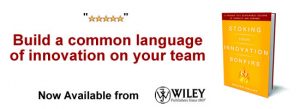PLM Re-Birth at McDonald’s: How to Maximize Value in a Decentralized Organization
[note these videos are from 2015]
McDonald’s, the world’s largest fast food restaurant chain, began its product lifecycle management (PLM) journey in 2005. Although their initial implementation was considered a success – they successfully installed a leading PLM software technology and deployed it on a global scale – an assessment a few years later uncovered that the organization had implemented the solution in a decentralized fashion and they weren’t getting the expected business benefits.
McDonald’s is a decentralized organization. Rather than a top-down structure, they prefer that most decisions are made as close to the market as possible. To maximize the value of their PLM initiatives, they moved the decentralized organization to a common platform, establishing PLM as their enterprise risk management tool. The re-birth of PLM at McDonald’s helps them protect the brand, increase nutrition transparency, and provide evidence in the wake of food scandals or consumer events.
These videos chronicle the McDonald’s PLM story.
PLM @ McDonald’s: What Drives PLM Success?
Jerome Lyman, VP Global Quality Systems at McDonald’s Corporation, explains what helped them be successful the second time around. Check out the video here.
PLM @ McDonald’s: An Essential Risk Management Tool
A key success factor of the PLM re-birth program at McDonald’s was establishing a clear vision for the solution. Driving cycle time improvements, productivity benefits, and material cost savings are often within the top reasons companies implement PLM. The vision at McDonald’s is to make PLM their enterprise business risk management tool that helps manage brand identity. Check out the video here.
PLM @ McDonald’s: The Cost of Not Implementing PLM
Change management is typically the hardest part of any major enterprise transformation. Selling the case for PLM to executives and getting funding is only the beginning, and organizations justify the spending with a business case that focuses on quantifiable value drivers. However, getting the organization on board also involves selling stakeholders on a compelling reason for change. Jerome Lyman, VP Global Quality Systems at McDonald’s Corporation, explains that his approach to developing a compelling statement of change for McDonald’s included the risk and cost of not implementing PLM. Check out the video here.
Daniela Ilieva is a Senior Manager, Oracle Practice & Alliance at Kalypso. She has 10+ years of cross-functional experience – including process improvement, technology implementation, change management, business development and marketing – in the fields for product lifecycle management (PLM), innovation and product development.
NEVER MISS ANOTHER NEWSLETTER!
LATEST BLOGS
Devil in the Details – Strategic Innovation
There is more talk about strategic innovation every day. As more and more industries enter their commodity phase, companies are…
Read MoreWhy Municipal WiFi is a Bad Idea
I saw a headline today in USA Today about Municipal WiFi and how many cities are pulling the plug on…
Read More


